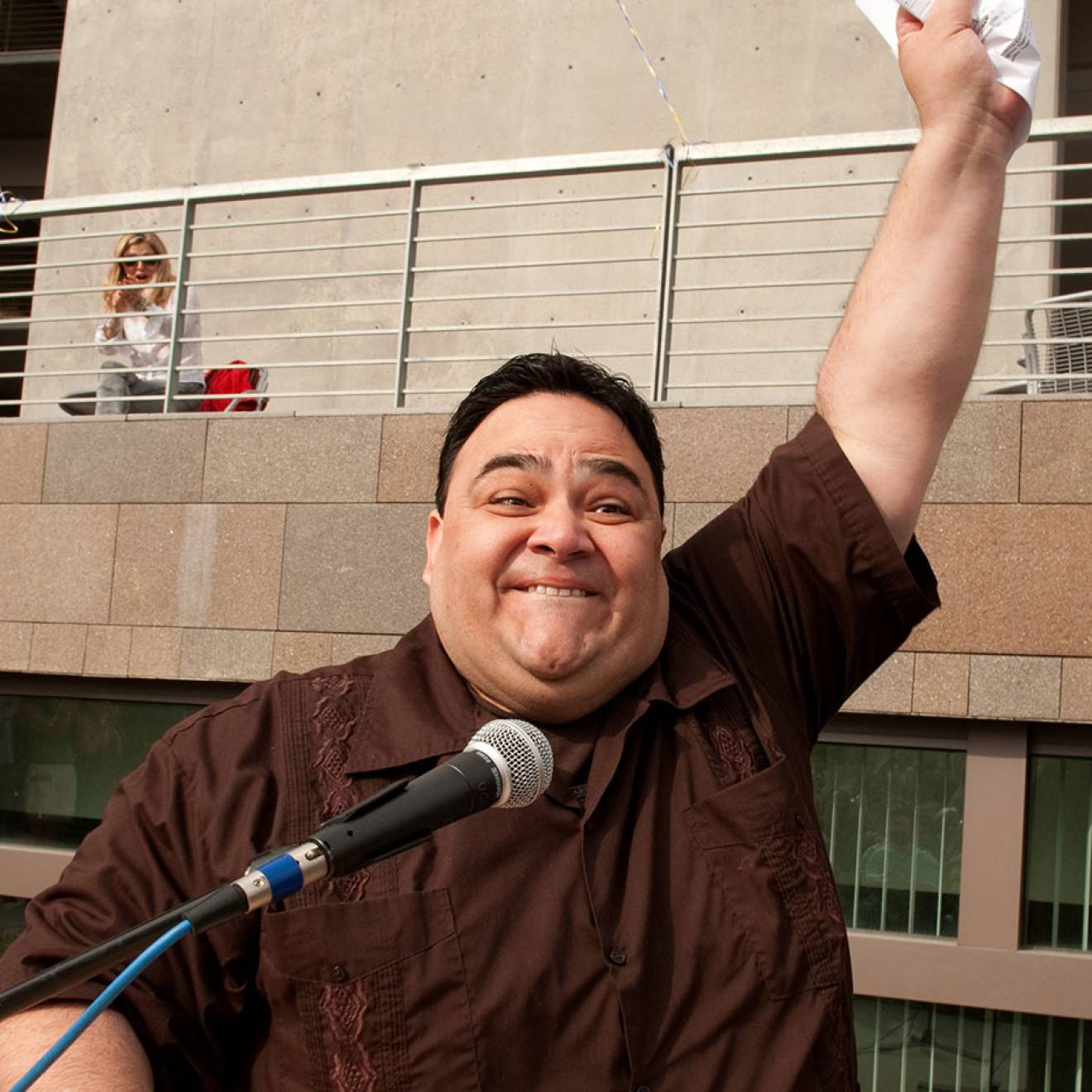Elaine Schmidt, UCLA
More than 1 million young and adult athletes in the U.S. suffer concussions each year. Until now, no consistent standards existed to guide coaches and physicians in evaluating and treating sports-related brain injuries.
Today (March 18), the American Academy of Neurology released its first updated guidelines since 1997 for managing athletes with head injuries. Developed by researchers from UCLA and University of Michigan, the new recommendations are entirely science-based, resulting from four years of meticulous analysis of previous studies of sports-concussion patients.
Published March 18 in the online edition of Neurology, the medical journal for the American Academy of Neurology, the new evidence-based guidelines have been endorsed by the National Football League Players Association, the Child Neurology Society, the National Association of Emergency Medical Service Physicians, the National Association of School Psychologists, the National Athletic Trainers Association and the Neurocritical Care Society.
"Our top piece of advice is that one size does not fit all," said co-lead author Dr. Christopher Giza, an associate professor of neurosurgery and pediatric neurology at the David Geffen School of Medicine at UCLA and Mattel Children's Hospital UCLA. "Proper concussion management requires individualized assessment and treatment before making the decision to return an athlete to the game. There is no routine timeline for a safe return to play."
In the past, concussion evaluation relied on generic grading systems that featured set timelines for returning an athlete to the game. The new protocol recommends immediately removing players with suspected concussions from the game for evaluation by a licensed health care provider trained in concussion diagnosis. Athletes should only return to play after they are medication-free and have recovered from all acute symptoms, such as headache, nausea, vertigo and disorientation.
Athletes of high school age and younger should be managed more conservatively, as evidence shows that they take longer to recover than college athletes.
"Kids aren't just little adults," Giza stressed. "Evidence suggests that young brains may be more vulnerable to trauma and take longer to recover from concussions."
Giza and co-author Dr. Jeffrey Kutcher, an associate professor of neurology at the University of Michigan Medical School, spent thousands of hours tracking down and reviewing all available concussion research published through June 2012. They excluded studies that did not offer enough objective evidence on which to base recommendations, such as reports about individual patients or those grounded in expert opinion. Collaborating with experts in a broad range of specialties, the authors anonymously analyzed and graded the merit of each study's findings before developing their recommendations.
According to the newly issued guidelines:
- Athletes are at the greatest risk of being diagnosed with another concussion in the first 10 days after a brain injury.
- Of the sports evaluated in the studies, the risk of male concussion is greatest in football and rugby, followed by hockey and soccer. The risk of concussion for young women and girls is greatest in soccer and basketball.
- No clear evidence suggests that one type of football helmet offers the best protection against concussion. Helmets should fit properly and be well maintained.
- Licensed health professionals trained in treating concussions should examine the athlete for ongoing symptoms (especially headache and fogginess), a history of concussions and younger age. Each factor has been linked to a longer recovery time.
- Risk factors associated with chronic neurobehavioral impairment in professional athletes include prior concussion, longer exposure to the sport and carrying the ApoE4 gene.
- Concussion is a clinical diagnosis. Symptom checklists, the Standardized Assessment of Concussion, neuropsychological testing (paper-and-pencil and computerized) and the Balance Error Scoring System may be helpful in diagnosing and managing concussions but should not be used alone for making a diagnosis.
Signs and symptoms of a concussion include:
- Headache and sensitivity to light and sound.
- Changes in reaction time, balance and coordination.
- Changes in memory, judgment, speech and sleep.
- Loss of consciousness or a "blackout" (happens in less than 10 percent of cases).
"When in doubt, sit it out," Kutcher said. "Evaluation by a trained professional is extremely important after a concussion. If headaches or other symptoms return with exercise, immediately stop the activity and consult a doctor. You only get one brain; treat it well."

